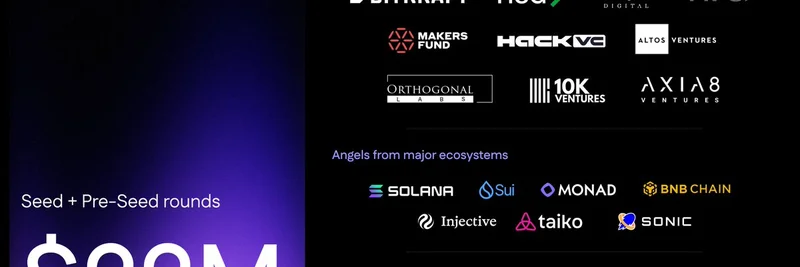Hey crypto enthusiasts, if you've been following the wild world of meme tokens, you know that buybacks and burns are like rocket fuel for prices—they create scarcity and hype. But what happens when a heavyweight Ethereum Layer 2 like Linea jumps on board with a "perpetual buyer" plan for its own $LINEA token? Thanks to a recent tweet from BSC News, we're diving into this game-changing mechanism that's set to shake up the ecosystem.
What Is Linea and Why Does It Matter?
First off, let's get the basics straight. Linea is an Ethereum Layer-2 scaling solution built by ConsenSys, the folks behind big names like MetaMask. It uses something called zkEVM—zero-knowledge Ethereum Virtual Machine—which basically means it processes transactions super fast and cheap while staying fully compatible with Ethereum's main network. Think fees up to 15 times lower than on Ethereum Layer-1, making it a go-to for DeFi apps and even institutional players.
The star of the show here is the $LINEA token. With a total supply of around 15.5 billion tokens, it's designed with community incentives in mind—no shady insider unlocks for teams or VCs. That alone sets it apart from some meme tokens that get rugged by early dumps. But lately, $LINEA has been trading at about $0.013, down 70% from its all-time high of $0.04 back in September 2025. Low transaction volumes are partly to blame, but Linea's new strategy aims to flip the script.
The Flywheel Effect: Becoming a Perpetual Buyer
Linea's big reveal, dropped in a thread on their official X account on November 1, 2025, is all about creating a "flywheel"—a self-sustaining loop where more network activity leads to more revenue, which fuels buybacks, burns, and yields. It's like a meme token burn on steroids, but backed by real ecosystem growth.
Gas Burn Mechanism: Turning Fees into Scarcity
Kicking off in early November 2025, Linea's gas burn system takes inspiration from Ethereum's EIP-1559 (that's the update that started burning ETH fees to reduce supply). Here's the breakdown:
- 20% of net gas fees go toward burning ETH, which supports the broader Ethereum network.
- The remaining 80% is used to buy $LINEA tokens on the open market and then burn them forever.
This means as more people use Linea—for trades, DeFi, or whatever—the network rakes in more fees, buys back more $LINEA, and reduces the circulating supply. It's deflationary tokenomics in action, potentially driving up value over time without relying on hype alone.
Native Yield Generation: Rewards for Liquidity Providers
Not stopping at burns, Linea is rolling out native yields soon—first teased in August 2025 via an integration with Lido V3. When you bridge ETH to Linea, it automatically starts earning yields, which get passed on to liquidity providers and DeFi protocols. Instead of dishing out $LINEA as incentives, it'll reward with ETH or stablecoins like mUSD.
At current revenue levels (around $20 million annually), this could mean about 1% APY for participants, but that scales with usage. It's a smart way to attract capital without diluting the token supply further, creating that flywheel where more activity equals more rewards and burns.
Institutional Capital: The Big Money Boost
To supercharge this, Linea's drawing in institutional dough. Take SharpLink Gaming, which announced on October 28, 2025, plans to deploy over $200 million in ETH on Linea over the next few years. They're using top-tier tools like Anchorage for custody, ether.fi for staking, and EigenCloud for DeFi yields. SharpLink focuses on real-world assets and payments, showing real trust in Linea's setup.
The team hints at more to come, including SWIFT integrations. This isn't just retail hype—it's long-term liquidity that boosts total value locked (TVL) and transaction fees, feeding right back into the buyback machine.
How Linea Strengthens Ethereum Overall
Linea isn't trying to steal Ethereum's thunder; it's more like a supportive sidekick. By handling transactions off the main chain with zero-knowledge proofs, it keeps things secure and scalable. And with full Ethereum equivalence, devs can port their dApps over without a hitch.
This positions Linea as an "economic backbone" for Ethereum, funneling value back through ETH burns and integrations like MetaMask, which boasts over 100 million users. In a sea of Layer-2 competitors, Linea's focus on deflationary mechanics and institutional appeal could make it a standout.
Wrapping It Up: What This Means for You
Linea's perpetual buyback and burn strategy is a fresh take on token economics, blending meme-like scarcity tactics with serious infrastructure. It tackles price slumps head-on by tying value to real network growth, yields, and big-player inflows. Sure, challenges like volatility persist, but keep an eye on upcoming events—like their November 4, 2025, podcast and zkEVM upgrades—for signs of momentum.
If you're a meme token trader, this could inspire similar mechanics in your favorites (think SHIB burns on steroids). For long-term holders, it's a reminder that sustainable tokenomics matter. As always, DYOR—do your own research—and stay tuned for more crypto insights right here on Meme Insider.
For the full scoop, check out the original article on BSC News.




